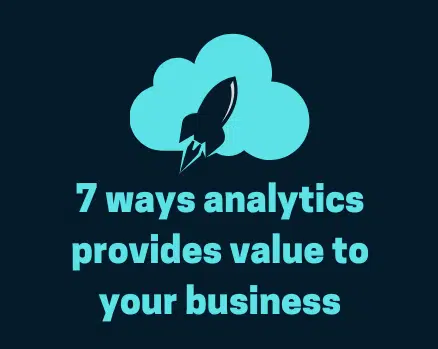A data pipeline has one role in your infrastructure…to transport data from source systems through the pipeline, and deliver it to a destination. Typically, this destination is a data warehouse, but it could be other systems within your organization, such as a CRM or EHR/EMR.
The concept of a data pipeline sounds simple. Still, complexities such as the volume of data, the data’s structure, and the data’s transformation can all make a seemingly simple task very complex. Data pipelines are commonly built through tools with steps that transform and move the data as it flows to the target system. These steps ensure the quality of the data stays intact and that data can operate within the target environment. Sometimes, the data pipeline may share the same source and target.
You may have heard the terms ELT or ETL (E = extract, L = Load, and T = Transform), but these are processes executed within the data pipeline. It isn’t uncommon for developers and architects to think in terms of either or both of these acronyms. Still, data pipelines offer so much more to an organization or I.T. department.
For example, a data pipeline might be responsible for feeding an analytics or visualization platform, such as Tableau or Count. These pipelines focus on cleaning the data and putting it into an actionable format within the target platform.
What does a data pipeline architecture look like?
Data pipelines have two types of processing, typically tied together through a lambda setup. A lambda setup combines the two processes so that the pipeline can support real-time streaming and historical data analysis. The two types of methods are batching processes and streaming processes.
A streaming process is the more accepted approach and is the process of transforming and loading data in real-time. As data comes into your eCommerce platform for new orders, as an example, those orders would immediately stream into the target system through the pipeline and become available in near real-time. The downside to streaming processes is that they can get resource-intensive when dealing with large volumes of data. That is why a data pipeline will also employ a batching operation, thus requiring a lambda setup.
A batching process is exactly as it sounds. On a set schedule, the data pipeline will pull down a bulk batch of data to process through the pipeline and into the target system. The data pipeline tracks the data that has already been pulled so that it can start at the next record in the data timeline on the next batch run.
With the evolution of platforms such as MuleSoft, data pipeline restrictions rarely come into play when talking about streaming data. Instead, your bottleneck usually occurs at the target system. This could be a database unless you use a tool such as Snowflake or your target visualization tool.
Regardless of your architecture, these are some common attributes of a data pipeline:
- A data pipeline provides high availability (H.A.) of your data so that you do not suffer interruptions or data loss.
- The more data you can share across your organization, the more democratized data becomes. This makes it easier for employees and teams to access the information they need quickly and use it to make better decisions.
- A means to make the data self-service so that your can employee can access your data through tools like Count.
How do you process data in a pipeline?
Having a well-architected data pipeline is only one piece of the puzzle. The other is processing data in the pipeline. The most common method, as mentioned before, is an ETL process. We see more businesses using an ELT process today, where data is transformed in the target environment, but ETL still seems to be very much the defacto method. The primary difference is that the pipeline transforms the data before loading it into the target environment. ETL is usually not the best solution for targets such as a Data Vault since you want your Data Vault to contain the raw source data.
All pipelines process data, at the most basic level, following these core processes:
- First is identifying and connecting to your source data. This might be a CRM, an EHR/EMR, a SaaS/PaaS tool, a database, or other web-based applications. Anything supporting pulling data through an API or pushing data through an API on-demand facilitates data extraction.
- Once extracted from the source system, the data is transformed and processed within the pipeline. Transformation of the data includes cleansing, sorting, validating, and restructuring/reformatting the data before it reaches the target system. Processing the data maps it to the target fields in the target system and then processes it in batches or through streaming.
- The final step is loading the data into the target system. This can be done through APIs in the target system that supports data ingestion or through connectors that allow data to be easily pushed into the system. Tools such as MuleSoft and Dell Boomi help many connectors to make this process easier for developers and architects.
Why should I build a data pipeline?
Now that you understand a data pipeline and how it works, you might ask yourself why you need them. This is a ubiquitous question we get here at QuadraByte because the previous sections highlight how complex it can be to implement and manage a data pipeline. Imagine having to do that for ten or even fifty pipelines, which is not outside the realm of possibility.
We already talked about the most significant advantage of a data pipeline. It increases the visibility of data across your employees and teams. Source data only offers a segment of your business’s view and doesn’t give you that 360-degree view. The system may not show things such as user-encountered errors, medical records of patients to help with appointments and follow-up bookings, customer loyalty programs that can help influence reservations for loyal customers, and so forth.
Secondly, a data pipeline reduces data errors by humans. I once worked for a large enterprise that was bleeding money but didn’t have an accurate view of its cash flow. Finance understood that money was flowing out of the company but didn’t have a clear picture of how money was flowing in. They had invested cross-organization in overlapping and redundant tools to try to solve the problem of data democratization but could not attribute the ROI to those tools. When they reported on financials each week, the data was constructed by a single person behind a keyboard, moving upwards of 10 Excel and CSV files around before combining them into a single, complex Excel spreadsheet. The result was the story they were telling wasn’t the reality of what was happening.
Last, a data pipeline maximizes your I.T. resources. Much like the second example shows how a lonely employee in Finance spent countless hours each week manually moving and manipulating the data. I.T. resources and engineering teams also see time optimization with data pipelines. More often than not, employees, such as the person in Finance, request data from the only people who can give it to them…the I.T. organization. With data pipelines, the data becomes available for all employees and teams to act upon, taking the repetitive and time-consuming strain off of the I.T. department.
Are you ready to act?
Data pipelines are a vital component of a modern data strategy. They connect data across the enterprise and allow stakeholders access to the data they need. This helps inform their business decisions and makes those decisions more accurate and profitable to the organization.
Multiple data pipeline architectures and tools can help you get to a more informed business. Do you need help getting your pipeline up and running? Speak to one of our experts on how we can partner to help your business get faster insights into your data.



